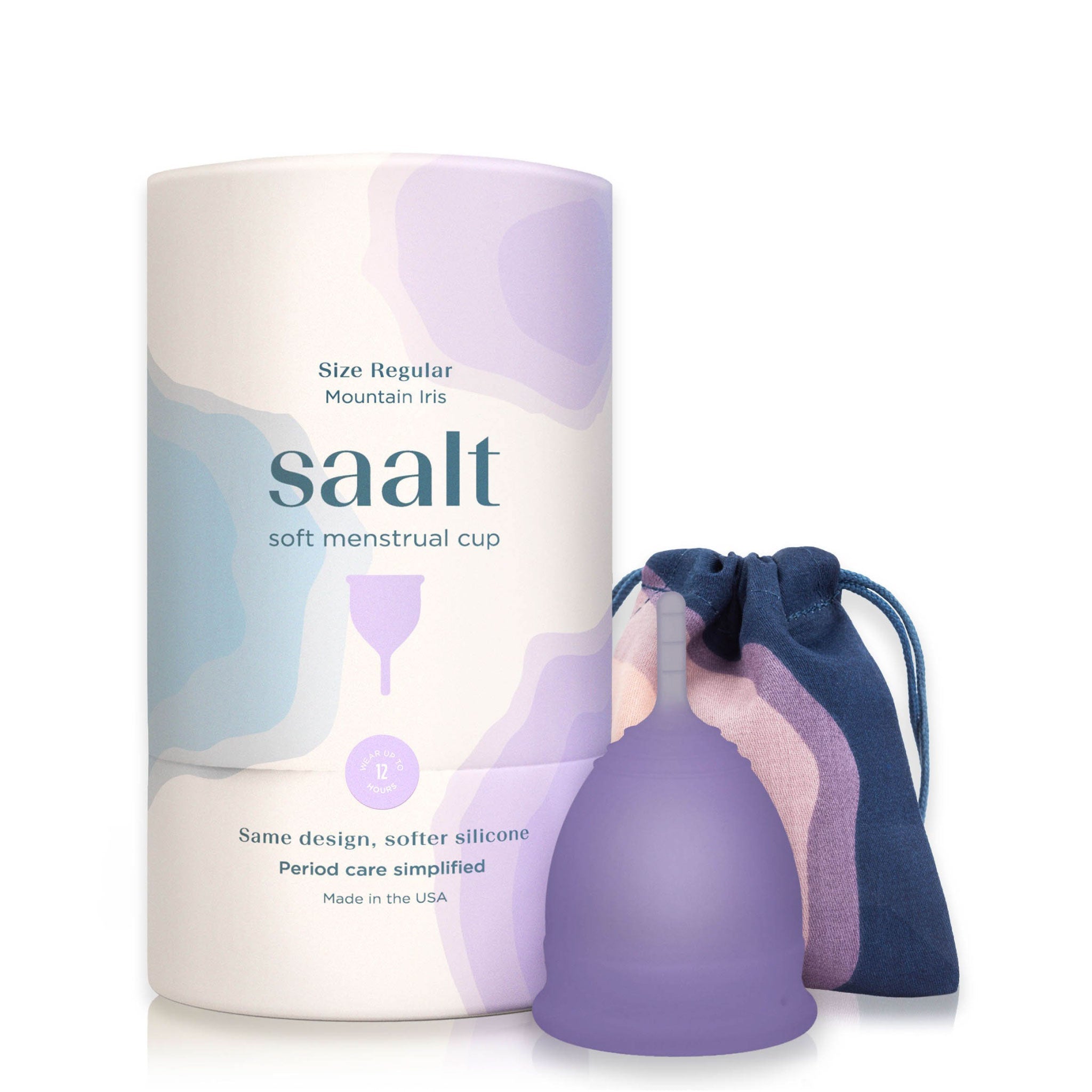Think you’re the only one experiencing bladder leaks? Think again. Bladder leaks are a lot more common than you think (cue your sense of relief knowing you’re not alone). The Mayo Clinic reports that “about 50% of women will experience bladder incontinence. Prevalence of this problem increases with age, as up to 75% of women over 65 report urine leakage.” At Saalt, we aren’t just interested in normalizing periods, but all stigmas surrounding periods, bladder leaks/incontinence, and overall anatomy. Our goal is to normalize conversations that have been deemed “embarrassing” over the years. So bladder leaks, let’s talk about it, why does it happen and how can we overcome it?
Bladder leaks can happen for a variety of reasons
Bladder incontinence doesn't just happen for one reason, it can be multiple reasons and life events. Chances are, you may have experienced one of the below medical issues, that can result in a leaky bladder.
Weakness in your pelvic floor
Ever sneezed or coughed and peed a little bit? It’s all connected to your pelvic floor. Events like childbirth or frequent constipation can lead to changes in your pelvic floor causing your pelvic floor muscles to weaken.
Overactive bladder
TWB anyone? This one is for anyone who has a “Teeny Weeny Bladder” or fussy bladder, and is constantly visiting the bathroom throughout the day. Sometimes you just don’t make it without a leak or two.
Urinary Tract Infections (UTI’s)
Around 50-60% of women will experience a UTI in their lifetime. Infections in the urinary tract can irritate the bladder and cause involuntary leakage.
Nerve Damage
Conditions like diabetes, multiple sclerosis, or spinal cord injuries can affect the nerves controlling the bladder, leading to leaks.
Hormonal Changes
Pregnancy, childbirth, or menopause all change your hormone levels which can lead to effects on your entire body, including bladder strength.
Other reasons for a leaky bladder can include:
- Medications
- Obstruction
- Physical Factors
- Age-related Changes
- Bladder Irritants
So how can we begin to normalize bladder leaks? It starts with education and open communication. By sharing our experiences and supporting one another, we can break down the barriers that prevent individuals from seeking help and finding solutions. But is this the solution? We will always recommend, first, seeking direction from a medical professional. However, we understand that can take time and resources some people may not have. At Saalt, we understand that leaks don't discriminate based on age, gender, or lifestyle, and our mission is to empower individuals to live their lives to the fullest, free from the worry of leaks.
Saalt Wear: Period Underwear that doubles as Bladder Leak Coverage
Saalt makes period underwear, but we also like to refer to it as “cute and sustainable” or the best period underwear on the market. Period underwear has revolutionized the way people manage their menstrual cycles. No longer are bulky pads or uncomfortable tampons the only options.
Saalt's leakproof underwear is poised to revolutionize protection for bladder leaks as well. You don't have to settle for incontinence pads or adult diapers. Saalt's bladder leak underwear offers a subtle and comfortable alternative that absorbs moisture and prevents leaks, allowing individuals to go about their daily activities with confidence. That’s not even the best part. As a B Corp, we’ve made it a part of our mission to not treat our leakproof panties with harmful chemicals, like PFAS.
Check out Saalt’s leakproof underwear to find the perfect fit and comfort for your body. Whether you’re working out, on an adventure, or just looking for every day comfort, our various absorbencies and styles have got you covered.
- Regular absorbency Saalt Wear is the perfect choice if your bladder leaks are just a sprinkle.
- Choose Heavy absorbency for light to moderate bladder leaks that leave you feeling a little uncomfortable.
- And Super absorbency has your back(side) covered for those moderate bladder leaks that would have you changing your underwear if you weren't wearing something leakproof, absorbent, and moisture-wicking.
Learn: How do leakproof panties work?
Learn: How to wash leakproof underwear.
Normalizing bladder leaks is about more than just finding the right leakproof underwear; it's about embracing our bodies, celebrating our diversity, and becoming educated and empowered to advocate for the care and support we need to live life to the fullest. Let's continue to break down barriers and challenge stigma, together.
Resources
- Mayo Clinic: Is Urine Incontinence Normal for Women? https://www.mayoclinichealthsystem.org/hometown-health/speaking-of-health/is-urine-incontinence-normal-for-women
- Johns Hopkins Medicine: Urinary Incontinence in Women https://www.hopkinsmedicine.org/health/conditions-and-diseases/urinary-incontinence/urinary-incontinence-in-women
- PubMed Central: Urinary incontinence in women https://www.ncbi.nlm.nih.gov/pmc/articles/PMC3749018
tags: Period Health, Period Underwear, Sustainable Lifestyle,





![hanky panky+ [powered by Saalt] French Brief](http://saalt.com/cdn/shop/files/SW-HP-PDP-Portrait-French-Brief-Navy-Front_medium.jpg?v=1762200243)




